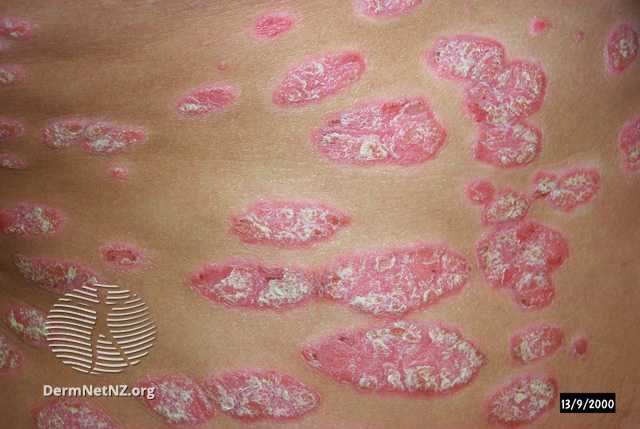- Acne
- Actinic Keratosis
- Aesthetics
- Alopecia
- Atopic Dermatitis
- Buy-and-Bill
- COVID-19
- Case-Based Roundtable
- Chronic Hand Eczema
- Chronic Spontaneous Urticaria
- Drug Watch
- Eczema
- General Dermatology
- Hidradenitis Suppurativa
- Melasma
- NP and PA
- Pediatric Dermatology
- Pigmentary Disorders
- Practice Management
- Precision Medicine and Biologics
- Prurigo Nodularis
- Psoriasis
- Psoriatic Arthritis
- Rare Disease
- Rosacea
- Skin Cancer
- Vitiligo
- Wound Care
Feature
Article
Apremilast Demonstrates Consistent Safety and Efficacy in Children with Moderate to Severe Plaque Psoriasis at 52 Weeks
Loretta Fiorillo, MD, FRCPC, reviews key data points from the phase 3 SPROUT study.
Amgen recently announced new 52-week results from the phase 3 SPROUT study (NCT03701763) evaluating the safety and efficacy of apremilast (Otezla) in pediatric and adolescent patients aged 6 to 17 years with moderate to plaque psoriasis that is inadequately controlled or intolerant to topical treatments.1
During SPROUT, a multicenter, randomized, placebo-controlled, double-blind study, the continued use of apremilast showed sustained improvements in psoriasis severity and skin involvement in patients for up to one year. Additionally, apremilast’s safety profile was consistent with previous apremilast studies.2
Patients in the SPROUT study received apremilast for a 36-week extended active treatment period following the 16-week randomized placebo-controlled treatment period, providing up to 52 weeks of data. In total, 186 patients completed the 36-week extension, 125 patients continued to receive apremilast, and 61 patients switched from placebo to apremilast.
The key study findings from SPROUT include:
- 56.3% of patients who received apremilast through week 52 achieved the study’s primary end point of a static Physician Global Assessment (sPGA) response (score of ≥3)
- 52.5% of patients who switched from placebo to apremilast achieved a sPGA response at week 52
- 71.4% of patients who received apremilast through week 52 achieved a secondary end point of Psoriasis Area and Severity Index (PASI)-75
- 75.4% of patients who switched from placebo to apremilast achieved PASI-75 at week 52
Treatment-emergent adverse events (AEs) were consistent with the known safety profile of apremilast in adults. The most common AEs (>10%) in SPROUT were nausea, diarrhea, abdominal pain, vomiting, and headache.
“These data reflect Amgen’s commitment to exploring new ways to treat inflammatory skin disease. A decade after the launch of Otezla, we continue to study how this oral therapy can help improve care and reduce disease burden in underserved patient populations,” said Ponda Motsepe-Ditshego, vice president of Global Medical at Amgen, in the news release.
Q&A With Loretta Fiorillo, MD, FRCPC
Loretta Fiorillo, MD, FRCPC
Credit: Red Deer Dermatology

Loretta Fiorillo, MD, FRCPC, a board-certified dermatologist at Red Deer Dermatology in Alberta, Canada, divisional director of pediatric dermatology and program director for the dermatology residency program at the University of Alberta, and clinical investigator of the SPROUT study, recently spoke with Dermatology Times about the significance of the study and its results.
Dermatology Times: Can you please provide a brief background on the SPROUT phase 3 study on pediatric and adolescent patients with moderate to severe plaque psoriasis?
Fiorillo: SPROUT phase 3 trial was a multicenter clinical controlled trial of apremilast for use in children aged 6-17, with psoriasis. 245 children were recruited and randomized 2:1 to either apremilast or placebo for 16 weeks, after which the children were all offered apremilast. This study adds to the 36 weeks open-label extension (OLE) which demonstrates sustained improvement over this time and no new side effects.
Dermatology Times: As an investigator and dermatologist, what 3-4 key results are most important for dermatology clinicians to know based on this new data?
Fiorillo: The main takeaway message is that apremilast is safe and effective in pediatric psoriasis and is the only oral agent studied for this indication. Here are the other key takeaways:
- Apremilast is the first oral option specifically studied for pediatric psoriasis.
- It is safe and effective for the treatment of psoriasis.
- Apremilast does not require ongoing laboratory monitoring.
Dermatology Times: Why is having apremilast for pediatric and adolescent patients with psoriasis so important? What is apremilast able to achieve that other therapeutics may not be?
Fiorillo: Most kids with psoriasis are treated with topical products, extrapolated from adult studies. Kids with moderate to severe psoriasis can be treated with methotrexate, an immunosuppressant widely used in rheumatology and oncology. There are also biologics, administered via subcutaneous injections, with frequency ranging from twice a week to every 12 weeks, depending on the specific drug. Apremilast is important because it is the first oral treatment for pediatric psoriasis and children do not like needles. No other oral drug has been studied or approved for use in children.
Dermatology Times: What challenges do younger patients with moderate to severe plaque psoriasis face?
Fiorillo: Challenges that children face are many: since psoriasis is visible, children may feel ashamed of their skin, other children may ask questions or worse interpret the skin lesions as contagious or bad, affected children may be afraid to go to swimming pools, beaches and other recreational activities. Moreover, children with psoriasis have an increased risk of developing psoriatic arthritis, obesity, and other comorbidities.
Dermatology Times: What other personal research or studies are you working on that you would wish to share with colleagues?
Fiorillo: I am currently also working on new treatment options for children with ichthyosis and atopic dermatitis.
References
- Amgen presents new research on Otezla (apremilast) at AAD 2024. Amgen. March 9, 2024. Accessed April 9, 2024. https://www.amgen.com/newsroom/press-releases/2024/03/amgen-presents-new-research-on-otezla-apremilast-at-aad-2024
- Fiorillo L, Becker E, de Lucas R, et al. Efficacy and safety of apremilast in pediatric patients with moderate-to-severe plaque psoriasis: 16-week results from SPROUT, a randomized controlled trial. J Am Acad Dermatol. Published online January 23, 2024. doi:10.1016/j.jaad.2023.11.068
Newsletter
Like what you’re reading? Subscribe to Dermatology Times for weekly updates on therapies, innovations, and real-world practice tips.








